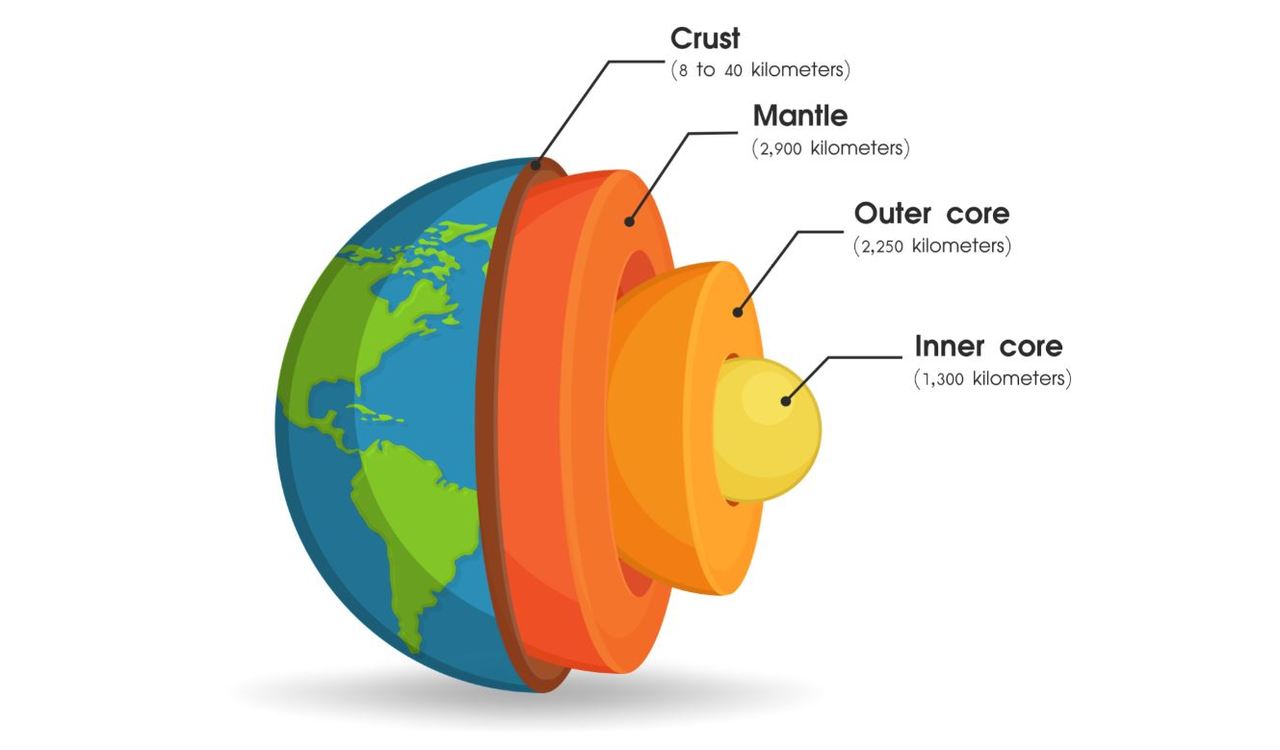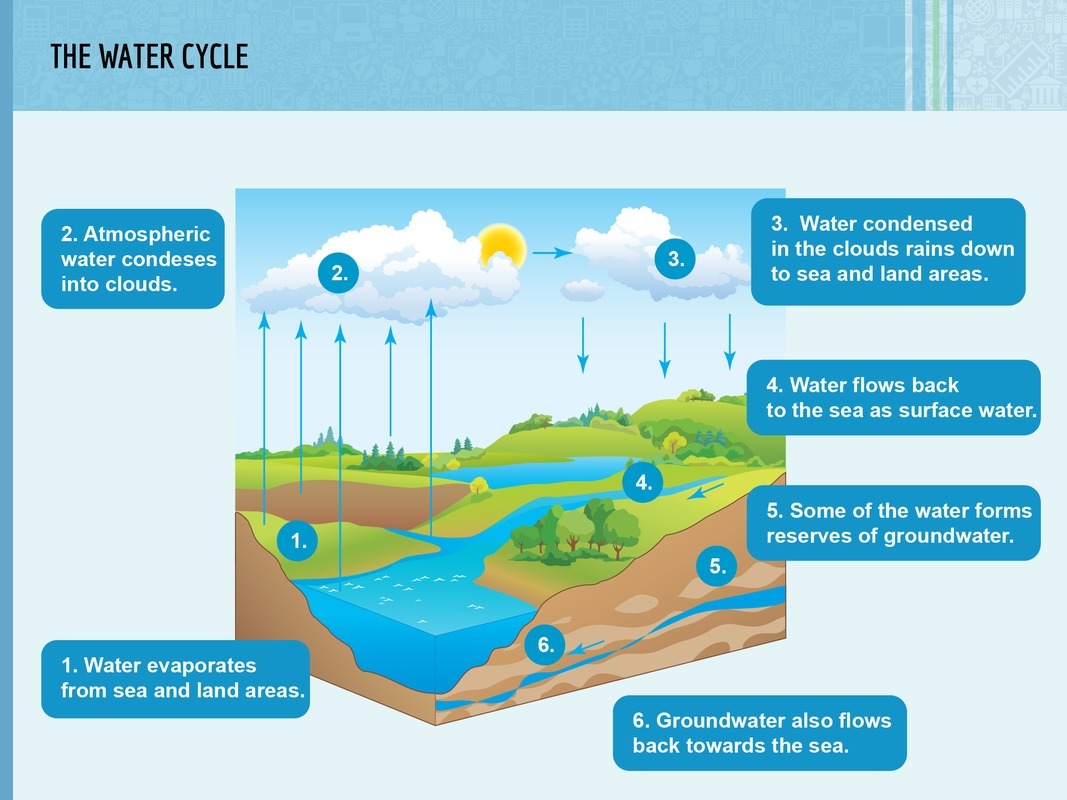31. Planet Earth
The birth of planet Earth

The birth of the Solar System.
In time, the loose material condensed into larger and larger bodies, forming the Sun and the planets of our solar system. The image above shows the birth of our solar system.

All planets of the solar system, including Earth, orbit around the Sun in the same direction and on the same relative plane.
When the Earth was young, it consisted of molten materials. The heaviest substances, such as iron and nickel, sank into the inner core of the planet, whereas the lighter substances remained near the surface.
This resulted in the formation of the planet's layers.
Currently, we do not know how Earth got its water.
The layers of planet Earth
The structure of planet Earth consists of four distinct layers.
The outermost layer consists of hard, rocky crust. It floats on top of a molten mantle. The innermost part of the planet is known as the core.
Based on research, we know that the core can be divided into two parts. The outer core consists of molten material, whereas the inner core consists of solid metals.

Planet Earth's crust consists of various plates. The borders between different plates are shown in red.
Earth's crust consists of smaller parts known as plates. Because of this, the planet's crust resembles a cracked egg shell.
The borders of different plates are full of activity. Depending on the flow of the molten material in the mantle beneath them, the plates can move away from one another, collide with one another or submerge below one another. These movements result in earthquakes and tsunamis.
When molten rock erupts through the planet's crust, the result is a volcano. When molten rock is found under the ground, it is called magma, whereas when it is found on the surface of the planet, it is known as lava. Slow volcanic eruptions are beautiful, whereas strong volcanic eruptions are dangerous.
The atmosphere
 There are also two layers on top of Earth's rocky crust: the hydrosphere and the atmosphere.
There are also two layers on top of Earth's rocky crust: the hydrosphere and the atmosphere. The atmosphere is very thin. If planet Earth is thought of as an apple, the thickness of the atmosphere can be compared to that of the apple's peel.
The atmosphere also contains various smaller layers.
However, the borders between these layers are not clear. Instead, they change into one another gradually.
At the altitude of 100 km, we can already consider that we are in space. At this altitude, the sky will already be black.
The Sun provides the Earth with plenty of radiation. This radiation comes in different wavelenghts, some of which are more beneficial for living organisms than others.
Light and heat radiation are both beneficial of organisms. They make life on the planet possible.
 Other forms of radiation are harmful. For example, the Sun's ultraviolet radiation can cause damage to living organisms.
Other forms of radiation are harmful. For example, the Sun's ultraviolet radiation can cause damage to living organisms. The planet's ozone layer (O3) protects living organisms from harmful ultraviolet radiation.
The atmosphere is held in place by Earth's gravity. If the planet would not have gravity, the gases of the atmosphere would escape into space.
The Moon has a low gravity, which is why it cannot support an atmosphere.
The significance of the atmosphere
 The atmosphere functions like a greenhouse. It lets heat radiation in, but prevents it from reflecting back into space. This is known as the greenhouse effect.
The atmosphere functions like a greenhouse. It lets heat radiation in, but prevents it from reflecting back into space. This is known as the greenhouse effect.Without the greenhouse effect, the planet would be a very cold place. However, if the greenhouse effect becomes too effective, the Earth will become uninhabitable.
The Sun and the atmosphere make it possible for water to travel from place to place on planet Earth. This is called the water cycle.
The Sun's heat radiation changes the state of Earth's water supplies. It causes liquid water to evaporate into the atmosphere. The atmosphere transports the water vapor from place to place with wind. Eventually, the water vapor cools down and condenses back into liquid, which falls back down to the planet's surface.

Terminology
| Term | Explanation |
|---|---|
| planet | A large object that orbits a star. E.g. Jupiter and Earth. |
| Earth's crust | The layer of hard, solid rock on the planet's surface. |
| mantle | The layer of molten rock between the planet's crust and its core. |